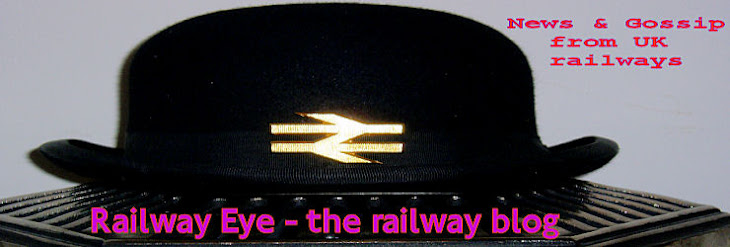Time for an exciting new Eye feature!
Hammond Eggs records the searing insights of the latest member of the ministerial transport team to take responsibility for rail.
This from a written answer on the 14th October:
Christopher Pincher (Tamworth, Conservative)
To ask the Secretary of State for Transport what assessment he has made of the contribution of open-access operators on the East Coast Main Line in support of the franchised operator.
Stephen Hammond (Wimbledon, Conservative)
The impacts of open access operation have been assessed against three criteria: (a) performance; (b) network utilisation; and (c) revenue of the InterCity East Coast franchise.
(a) Open access operators on the east coast route have typically delivered lower levels of performance than the franchised operator, in part because one of them operates relatively old diesel trains;
(b) Open access operation has had no material adverse impact on network utilisation, although the constraints on platform occupancy at Kings Cross, in particular, and Doncaster, to a lesser extent, have complicated operations at those two stations;
(c) Open access operators have generally tended to abstract revenue from the franchised operator. Furthermore, where bidders in the forthcoming InterCity East Coast franchise competition perceive a risk of additional open access competition causing further abstraction, they are likely to offer lower bids.
No sources cited of course.
Good to see that Stephen Hammond (of all people) is happy to repeat the prejudices of his civil servant masters (is this right? Ed).
As usual that old 'abstraction' canard gets an airing - perhaps Pete Wilkinson (Director Franchising and late of Renaissance Trains) can explain to Mr Hammond the 'not primarily abstractive' test, which the ORR uses to validate all Open Access bids?
At the same time the Parliamentary Under Secretary of State may even wish to read the Office of Rail Regulation's June 2013 consultation on On-rail competition, which states:
Despite the very limited role that competition currently plays, there is evidence that it drives passenger benefits including lower fares increases, higher growth in passenger numbers, direct services to new destinations, and various service quality benefits.
Open access entrants, who always face strong competition from franchised operators, have higher passenger satisfaction scores than franchised operators, including other intercity operators, who in the main do not face on-rail competition.
Quite so.
But then, since when have the residents of Great Minster House ever been interested in driving passenger benefits?
UPDATE: This from Depot Lad...
On the subject of “old diesel trains”.
I thought the following key points might be helpful for Mr Hammond who is evidently new to his brief.
- Grand Central operates the same type of “old diesel trains” as those operated by both East Coast and Great Western, and some that are significantly newer than East Coast’s diesel and electric fleets;
- Hull Trains operates diesel trains that are significantly newer than East Coast’s diesel and electric fleets;
- Grand Central’s HSTs were the last on the network to be re-powered and upgraded and as such, are in a newer “mod state” than those operated by East Coast;
- Open access operators need less cancellations than franchised operators to seriously adversely impact on the stats;
- East Coast’s cancellations rate is well in excess of that of Great Western, who exclusively operate “old diesel trains”.
As our North American cousins might say - go figure!
UPDATE: This from Data Minor...
I thought Eye readers and the minister might be interested in the latest NFRIP figures below:
| Operator | Fleet | Primary DPI | Primary DPI MAA | MTIN | MTIN MAA |
| Grand Central | Class 180 | 25.4 | 24.3 | 13,118 | 8,641 |
| East Coast | IC225 | 38.4 | 33.3 | 11,537 | 12,326 |
| Grand Central | HST Set | 0 | 19.3 | 41,421 | 13,188 |
| Hull | Class 180 | 18 | 27.9 | 14,380 | 14,561 |
| East Coast | HST Set | 34.9 | 47.3 | 18,653 | 18,619 |
Hull Trains class 180s and Grand Central HSTs are both more reliable than East Coast's IC225 fleet.
UPDATE: This from a source close to DOR...
For the record:
1. EC's HSTs currently have the best MTIN MAA of all the HST fleets, and this is on an improving trend
2. Second spot in the HST MTIN MAA table is occupied by the XC HSTs, which just happen to be maintained by EC
3. The poor design of the 225 fleet leading to historically chronic levels of reliability is well documented by all operators including BR, GNER, NXEC and now EC.
MTIN MAA is currently at its highest level since this measure was introduced, and on a rising trend, despite the utilisation of the fleet being substantially higher than ever before.
Eye biased towards Open Access Operators? Just fancy that!!!





